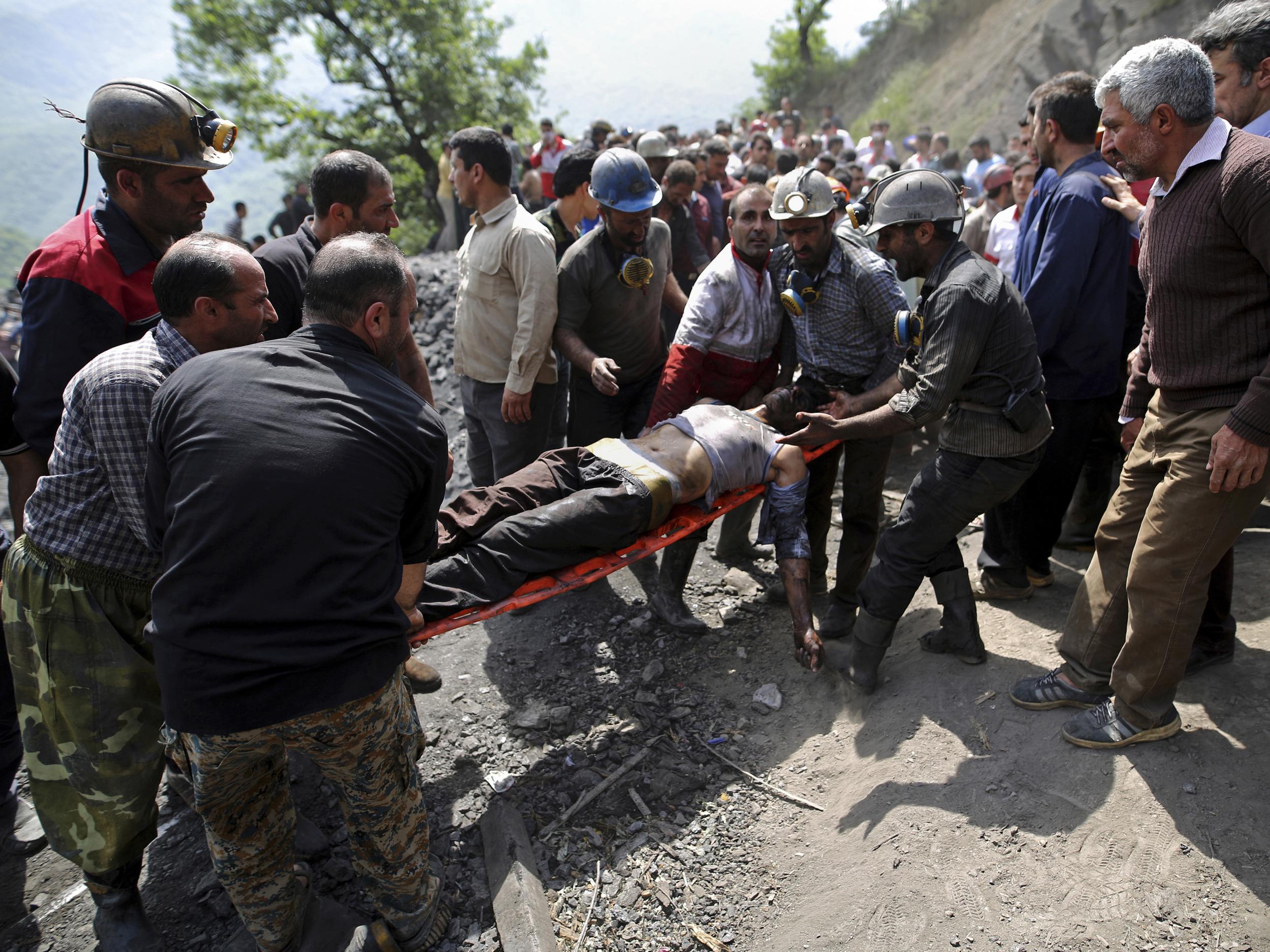Iran coal mine explosion: Rescue efforts underway after blast kills at least 21 miners
Authorities warn death toll could rise as further 14 men known to be working underground at site in Golestan province at time of accident

Your support helps us to tell the story
From reproductive rights to climate change to Big Tech, The Independent is on the ground when the story is developing. Whether it's investigating the financials of Elon Musk's pro-Trump PAC or producing our latest documentary, 'The A Word', which shines a light on the American women fighting for reproductive rights, we know how important it is to parse out the facts from the messaging.
At such a critical moment in US history, we need reporters on the ground. Your donation allows us to keep sending journalists to speak to both sides of the story.
The Independent is trusted by Americans across the entire political spectrum. And unlike many other quality news outlets, we choose not to lock Americans out of our reporting and analysis with paywalls. We believe quality journalism should be available to everyone, paid for by those who can afford it.
Your support makes all the difference.A large explosion struck a coal mine in northern Iran on Wednesday, killing at least 21 miners and trapping several others as rescue teams worked frantically through the day and into the night to reach them, officials said.
Iran's official IRNA news agency quoted Sadegh Ali Moghadam, the provincial director of disaster management, as saying that 21 bodies have been found following the explosion in Golestan province.
Moghadam warned of the “possibility of the death toll rising” as authorities estimate that a total of 35 miners were inside the mine at the time of the explosion.
The semi-official ISNA and Tasnim news agencies gave the same death toll. ISNA quoted Houman Hadian of the Golestan mining industry, as saying that after hours of rescue efforts, the main tunnel of the mine was opened as teams continue to try to get to the miners.
“We are trying to inject oxygen into the tunnel to increase the chances of survival for people who are trapped in the mine,” Moghadam said.
Provincial spokesman Ali Yazerloo said the blast happened at 12.45pm local time (9.45am GMT) and that the provincial governor was heading to the scene. Several officials blamed the explosion on accumulated gas and said it was affecting rescue efforts.
After the blast, ambulances, helicopters and other rescue vehicles raced to the scene as authorities worked to determine the scale of the emergency.
Initially, there was confusion about how many miners had been trapped inside.
Hossein Ahmadi, head of the provincial Red Crescent, told state TV that about 26 were believed to be trapped. But other officials provided significantly higher estimates, including one from Pir Hossein Kolivand, who runs Iran's emergency department and who said as many as 80 miners could be trapped in two sections of the mine.
Earlier, Moghadam also said that about 25 people were injured in the accident.
Separately, at least 25 people who had entered the mine to try to save those trapped had to be taken to the hospital after inhaling the gas, said Hamidreza Montazeri, the deputy head of the emergency management department in Golestan.
Iranian news reports said the explosion happened while workers were changing shifts. Hassan Sadeghlou, Golestan's governor, told state TV that the explosion may have been caused by someone attempting to restart a lorry engine inside the mine tunnel.
“I carried two out of the mine,” an unidentified, soot-covered miner told state television earlier in the day. “It is not possible to go inside again. Oxygen tanks should be brought.”
Another miner said he feared his colleagues trapped inside may have died.
“The gas in the mine exploded and my colleagues remained in the tunnel,” he said.
Semi-official Iranian news agencies posted images online from the scene, showing ambulances and emergency workers gathered at the mouth of the mine. Some showed dazed workers, covered in coal dust, being helped by bystanders or laying on the ground as rescuers rushed past with oxygen bottles.
More than 500 workers are employed at the Zemestanyurt mine, which lies 14 kilometres (9 miles) from Azadshahr, according to IRNA. Golestan sits along Iran's northern border with Turkmenistan and along the shore of the Caspian Sea.
Oil-producing Iran is also rich in a variety of minerals. Iran annually consumes some 2.5 tonne of coal but only extracts about 1 million tonnes from its mines per year. The rest is imported, often consumed in the country's steel mills.
This is not the first disaster to strike Iran's mining industry. In 2013, 11 workers were killed in two separate mining incidents. In 2009, 20 workers were killed in several incidents. Lax safety standards and inadequate emergency services in mining areas often are blamed for the fatalities.
Since Iran's nuclear deal with world powers, the country has begun an effort to renovate some of its coal mines. Delegations have visited Tehran from foreign countries including the Czech Republic, hopeful for contracts.
Copyright Associated Press
Join our commenting forum
Join thought-provoking conversations, follow other Independent readers and see their replies
Comments